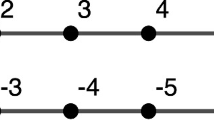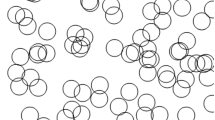Abstract
We consider a discrete Schrödinger operator on l2(ℤ) with a random potential decaying at infinity as ¦n¦−1/2. We prove that its spectrum is purely singular. Together with previous results, this provides simple examples of random Schrödinger operators having a singular continuous component in its spectrum.
Similar content being viewed by others
References
F. Delyon, B. Simon, and B. Souillard,Phys. Rev. Lett. 52:24 (1984), 2187.
F. Delyon, B. Simon, and B. Souillard,Ann. Inst. Henri Poincarré 42:3 (1985), 283.
S. Kotani, private communication.
L. A. Pastur,Commun. Math. Phys. 75:201 (1980).
T. Kato,Perturbation Theory for Linear Operators (Springer, Berlin, 1966), p. 540.
Author information
Authors and Affiliations
Rights and permissions
About this article
Cite this article
Delyon, F. Appearance of a purely singular continuous spectrum in a class of random schrödinger operators. J Stat Phys 40, 621–630 (1985). https://doi.org/10.1007/BF01009893
Received:
Issue Date:
DOI: https://doi.org/10.1007/BF01009893




